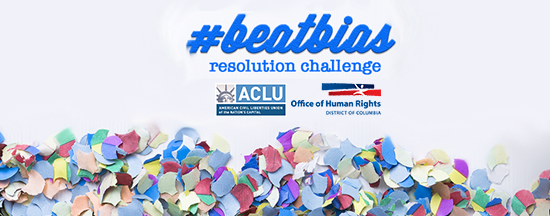
Visit the #BeatBias Resolution homepage to view all the steps released so far.
Step 6: Dig deep in the ditches of daily decisions (say this 5 times fast… go)
Crossing the street to avoid certain people on the sidewalk, holding your cell phone a bit tighter depending on who is next to you on Metro, or avoiding certain bars or restaurants because of the clientele. These are all behaviors that may be influenced by unconscious bias.
It’s important to identify these situations in our daily lives, and to work proactively to avoid the behavior our unconscious bias is influencing. One way to do this is to evaluate your daily activities, and purposefully behave differently.
Today’s Action Item
-
Below we have identified situations in which unconscious bias often affects our behavior or routine. Get outside your comfort zone, and today try as many of the suggestions below as possible.
- When stepping on the Metro or bus, think about which seat you would normally take and why. Then think about which seat you would normally be least likely to take, and sit there. Often times our unconscious bias uses stereotypes of fellow riders to determine who is “safest” to sit by.
- When walking around the city, pay attention to which people you make eye contact with and which you do not. Is there a pattern in those you engage and those you avoid? Now make an effort to make eye contact with everyone you pass… perhaps even nod, smile or say “hello.” Often times our unconscious bias chooses for us which people are “safe” or will be most receptive to make eye contact with.
- Instead of going to the grocery store, restaurant or bar you normally do, try going to one in another location, where people from other communities are predominant. This could be a Latino grocery store, a restaurant with mostly gay patrons, or a restaurant in a predominantly Black neighborhood.
- Have lunch with a coworker you do not know well, and who may have chosen labels different from yours in Step 4. Unconscious bias can play a role in who we become friends with… and that bias usually favors people who look like us.
Today’s activity included just a few of the situations in which unconscious bias can influence our behavior, routine and friend networks. Stay aware of these situations, and try to identify new ones in which to alter your behavior.
You’re doing great… only two more steps to go! Come back tomorrow at 10am!


